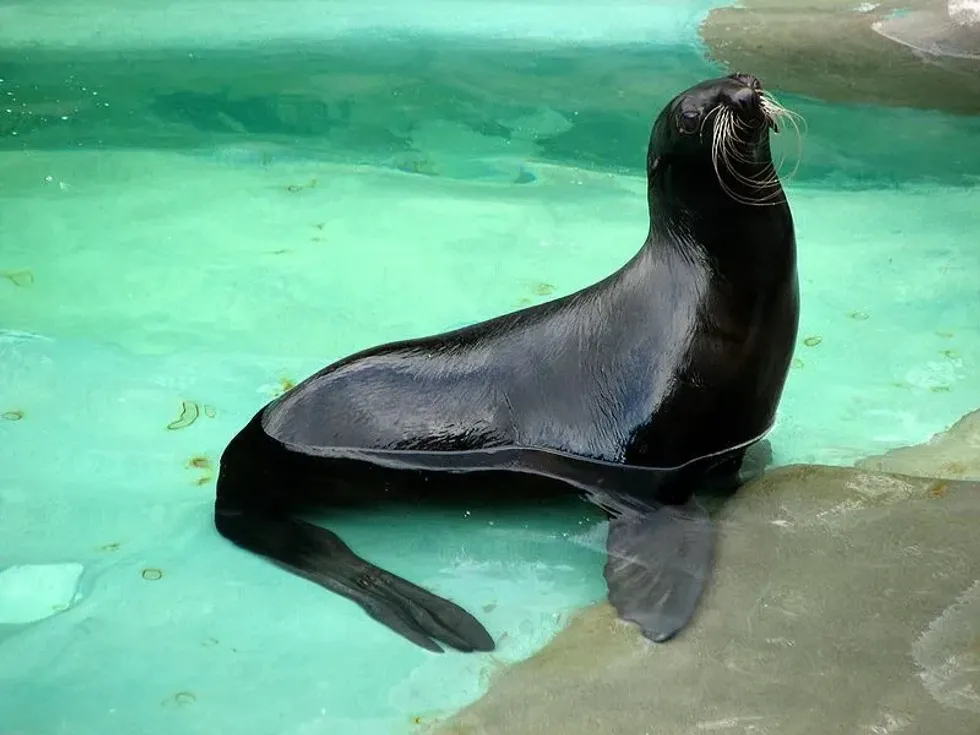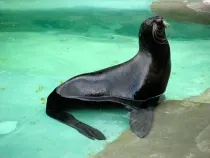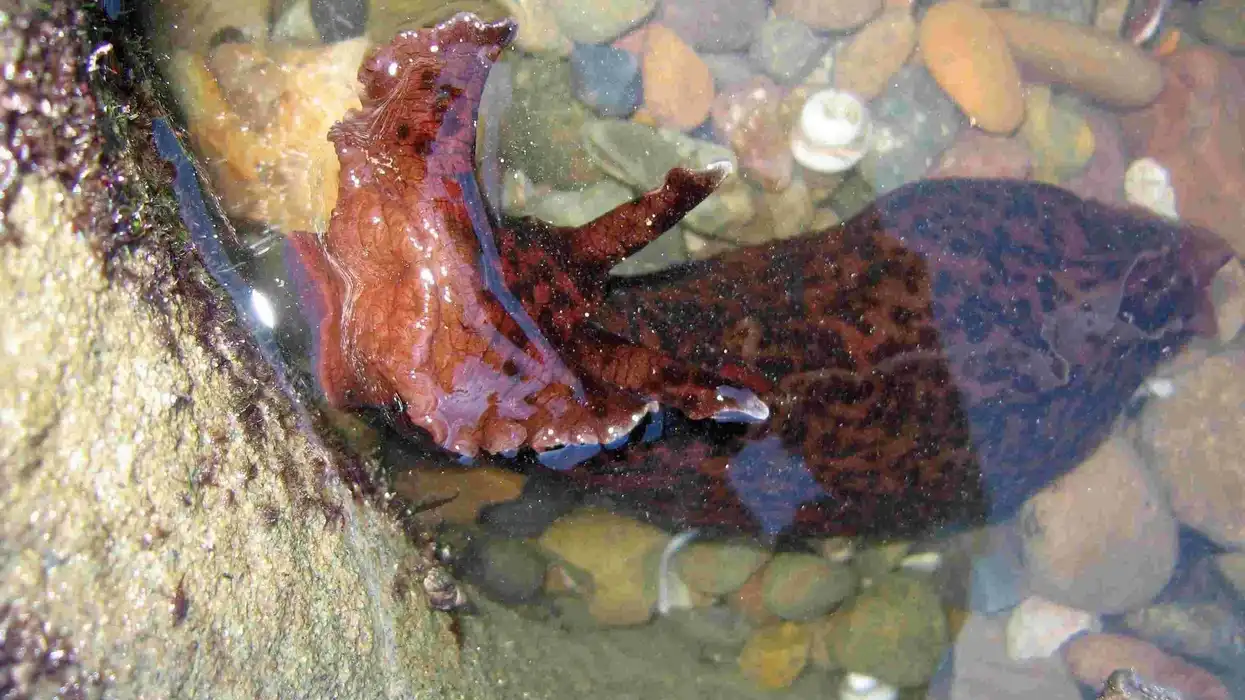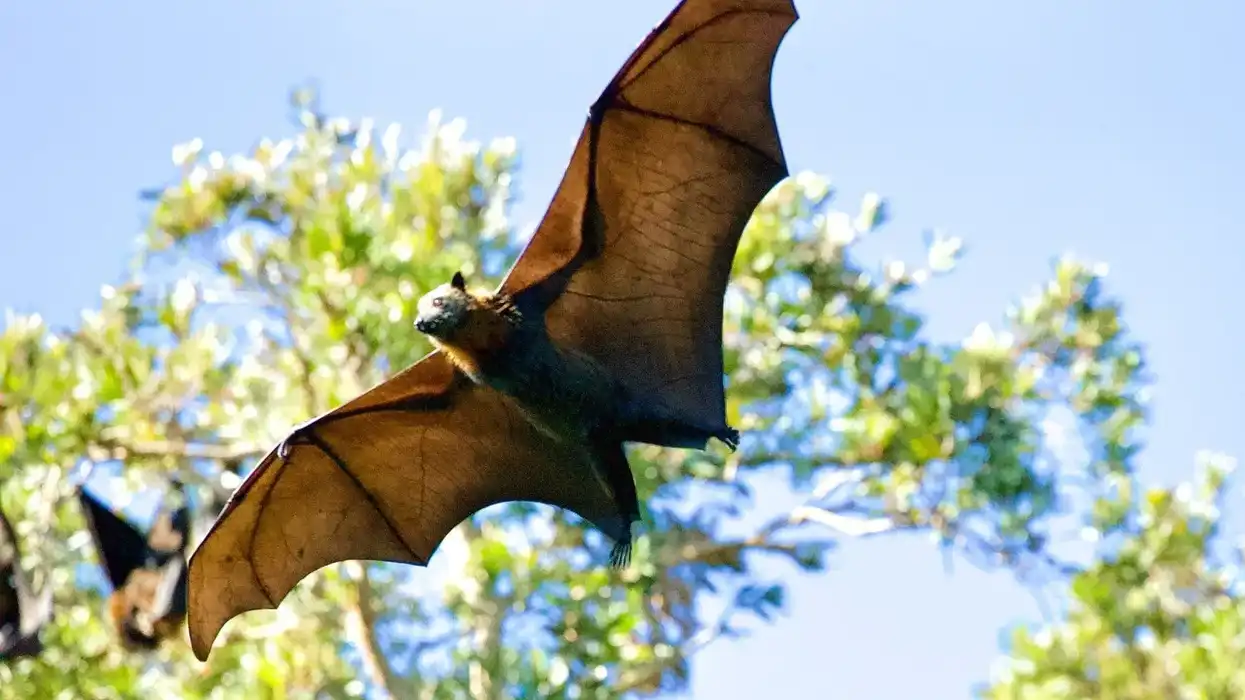The Clade Pinnipeds are typically recognized as ‘seasl’ and comprise of three families: the Odobenidae which only has Walrus, the Phocidae also known as ‘true seals’ because of the absence of ears, and the Otariidae also known as ‘eared seals’ because of the presence of ears which differentiate this family from the Phocidae.
The Northern fur seal was named ‘sea ears’ by the Europeans that is quite evident from their scientific name Callorhinus ursinus which implies ‘bear like’.
Discovered in the Northern Pacific, their geographical distribution is reasonably vast, but the population of this species is gradually declining because the northern fur seals are being hunted for their exotic fur.
Although the northern fur seals have been consumed by the native Alaskan people yet their population did not decline as much as it did after the European arrived and began trading.
Today the northern fur seals come under the category of Vulnerable species according to the IUCN.
Keep reading this article for more incredible facts about the northern fur seals. Please go and check out our articles on southern elephant seals and fur seals.
Northern Fur Seal Interesting Facts
What type of animal is a northern fur seal?
The northern fur seal (Callorhinus ursinus) is a type of eared seal that is the largest species of the subfamily Arctocephalinae. Northern fur seals spend almost 80% of their days in the sea.
What class of animal does a northern fur seal belong to?
The northern fur seals belong to the class Mammalia, family Otariidae and genus Callorhinus.
How many northern fur seals are there in the world?
These seals are probably one of the species which has encountered human barbarity the most because of their fur.
The fur trading of the seals began in the 17th century, since then the population of the Northern fur Seals started declining.
At the beginning of the 20th century, a majority of their population had already vanished.
More than one million northern fur seals can be observed in the territories of Pribilof Islands located in the southern Bering Sea during the mating season, about two hundred thousand in the west Bering Sea on the Commander Islands, approximately one hundred thousand in the southwest part of the Okhotsk Sea and a minor population of these seals can be found in St Paul, San Miguel Island, South Farallon Island and Bogoslof Island.
This is the average estimation, however, the exact number is not listed.
Where does a northern fur seal live?
These marine animals were discovered in the North of Pacific Ocean, Bering Sea, and the Sea of Okhotsk. Their geographic distribution range also includes Southern California which lies in the Eastern Pacific and Japan and occasionally intersects with the range of the Steller sea lions.
In the North, they are discovered in the Beaufort Sea. During the breeding months, a huge population can be seen of the Pribilof Islands which is also the largest breeding site.
What is a northern fur seal's habitat?
The northern fur seal habitat can be described as an open ocean, with rocky or sandy seashores where they can reproduce, rest and undergo the process of molting just like the Pribilof Islands.
Who do northern fur seals live with?
They are the most solitary marine animals, particularly during the winter when their range expands across the Pacific between Southern California and Japan. In the summer season, which is also their breeding season, a large number of seals come together and form rookeries and the congregation of juvenile males is called haulouts.
How long does a northern fur seal live?
The northern fur seals can live until the age of 27, while the approximate lifespan of adult males is 18 years and the female northern fur seals are 26 years.
How do they reproduce?
It is during the summer the breeding season commences and the northern fur seal range habitat includes the sandy or rocky coasts where they can mate.
The breeding sites include six islands in the North of the Pacific and the Bering Sea, the breeding islands comprises The Pribilof Islands which is one of the largest breeding colonies, particularly St. George, St. Paul, Sea Lion Rock, San Miguel.
These seals are polygamous and form rookeries, and the process of reproduction is sexual. Soon after the breeding season, the females give birth to pups, commonly one northern fur seal pup after a gestation period of almost 240 days.
The pups are precocial, and they are provided with protection and lactation during the initial days by the females while the males do not provide the pups are sort of care.
What is their conservation status?
The population of the marine animals found in the open ocean is gradually declining, and the conservation status of the species is Vulnerable according to the IUCN. The northern fur seal population started declining since they were being hunted for their fur.
Northern Fur Seal Fun Facts
What do northern fur seals look like?

The Callorhinus ursinus is a marine mammal initially hunted for its fur.
Although it may resemble Guadalupe fur seals to the sea lions, there are distinctive characteristics that differentiate the Northern Fur Seals from the rest. Identified for their dense pelage which has almost 3000000 hair per sq in (20833.3 sq.
ft) and the color can range from dark gray to brownish, it comes with an underfur which is cream color.
The size of males is typically larger than the females, the average size of adult males can be approximately males 83 in (210 cm) and the adult females are almost 59 in (150 cm).
Adult males are bulky and with a wide neck which is covered in the bushy mane and the pelage is a lighter color than the rest of the body.
The head of both males and females appears small because of the short and down curved muzzle and a small nose another contrasting feature of this species is their flippers, the fore flippers do not have any fur and their hind flippers are long. The whiskers are long and white among the adults while the pups have black whiskers.
Like other carnivores, the teeth of this marine mammal are pointed and sharp with prominent upper canines.
How cute are they?
Fur seals are considered cute by the majority of people because of their appearance.
How do they communicate?
All types of seals retain the ability to communicate vocally by producing different sounds.
How big is a northern fur seal?
The size of adult male northern fur seals is bigger than the female, with an approximate length of 83 in (210 cm) for males and 59 in (150 cm) for females.
The northern fur seal is also the largest amongst its subfamily Arctocephalinae, it is slightly bigger than the Antarctic fur seal where the adult male grows to the size of 79 in (200 cm).
For comparison, it is significantly smaller than the elephant seal, which grows around 110.3-236.3 in (279-599 cm).
How fast can a northern fur seal move?
The speed is approximately 14.9 mph (24 kph).
How much does a northern fur seal weigh?
The females are smaller than the males and have an average weight of 88-110 lb (40-50 kg) while the males are 397-606 lb (180 -275 kg). The pups are 11-12 lb (5.2-5.7 kg).
What are the male and female names of the species?
The males are known as bulls, while the females are known as cows, it is easy to identify the sex, not just because of the male fur which is lighter colored around its neck, but also because of their size as this species is highly sexually dimorphic.
What would you call a baby northern fur seal?
The females give birth to one pup after 240 days and the pups are precocial and blackish. The male pups weigh 12.6 lb (5.7 kg) while the female pups are slightly smaller and weigh approximately 11 lb (5.2 kg).
What do they eat?
The northern fur seal is a carnivore and eats a variety of fishes, squids, and other marine animals to survive.
Are they poisonous?
No, they are not poisonous.
Would they make a good pet?
No, they won't because they are protected and it's not possible to keep them at home.
Did you know...
Even though northern fur seals are marine mammals their bodies are designed for terrestrial movements as the hind limbs are in a plantigrade stance suitable for quadrupedal locomotion.
Why are northern fur seals endangered?
The conservation status of northern fur seals and why are they endangered goes a long way back when they were primarily consumed by the native Alaskans and Northeast Asians.
However, the major threat was the trading of their fur, particularly in the 17th-18th century when more than 2.5 billion seals were killed for their fur, which brought down the population of these seals and by 1912 only 216,000 seals were left.
Do fur seals eat penguins?
Fur seals are carnivores, there are numerous instances which have been reported of them catching and eating penguins on the islands.
Here at Kidadl, we have carefully created lots of interesting family-friendly animal facts for everyone to discover! Learn more about some other mammals from our leopard facts and puma facts pages.
You can even occupy yourself at home by coloring in one of our free printable northern fur seal coloring pages.









